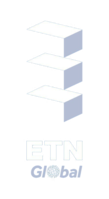GT Life Assessment and Extension WG
ETN GT Life Assessment and Extension Working Group
Gas turbine components, such as hot gas path parts and rotors, have a defined nominal design life set by the original equipment manufacturer. However, many capital assets of advanced gas turbines (such as single crystal blades) reach the end of their recommended cyclic life (after one or more repair-recoating cycle) without revealing any major damage or defects (for the rotating parts) or else with only some repairable defects (for the stationary parts). Should these parts be replaced?
A similar valid question arises when a turbine rotor and discs reach the end of their nominal design life: what is the risk of operating an aged turbine rotor? What are the risks for base load operation and how do these changes if transitioning to cyclic operation? More generally for turbine integrity, the question to be asked is how to manage the integrity of an aged critical asset such as a gas turbine? The turbine integrity assessment should also include managing the risks associated with the compressor, i.e. the cold parts of the turbine, which is inspected less frequently than the hot section parts.
Many operators in both oil and gas and power generation industries aim to continue using their current fleet for another 10-15 years. A new Gas Turbine Life Assessment and Extension Working Group (WG) at ETN will work to address some of the above concerns.
More in detail, this WG will explore the following three main topics.
- Parts cyclic operation. Replacing the capital parts of the engine is often a large expense. Questions which most operators ask are: do the parts need to be replaced, or can the remaining cyclic life of the parts can be re-evaluated and the interval of maintenance extended for the unit under cyclic duties? Can advanced non-destructive inspection techniques can be employed to further evaluate the parts? To extend the cyclic operational life of the parts one needs to study the impact of thermal fatigue (in combination with creep) and to increase confidence in the predicted life. To this end, it would be highly beneficial to sample engine run components operated under a cyclic regime with many starts (rather than testing lab-scale cast samples alone).
- Rotor and Rotor Disc Lifing. The development of an engineering platform is key to understand the issues around the rotor integrity and make informed decisions when extending the life or planning for any destacking or replacing of the discs.
- Compressor. The number of engine failures over recent years, mostly in more advanced units, raises the question around compressor integrity and reliability. To reduce the risk of unplanned outages, it is suggested to develop a more comprehensive inspection and risk assessment method for evaluating the compressor integrity, by improving our knowledge around the risk associated with the compressor parts.
Interested to join this Working Group? Please send an email to info[at]etn.global
Not a member yet? Find out more about the ETN membership here.
LEAD CONTACTS:
Nicolò Cairo, ETN
PROJECT GROUP MEMBERS:




There are no upcoming events
Past event(s)
There are no previous events to display



